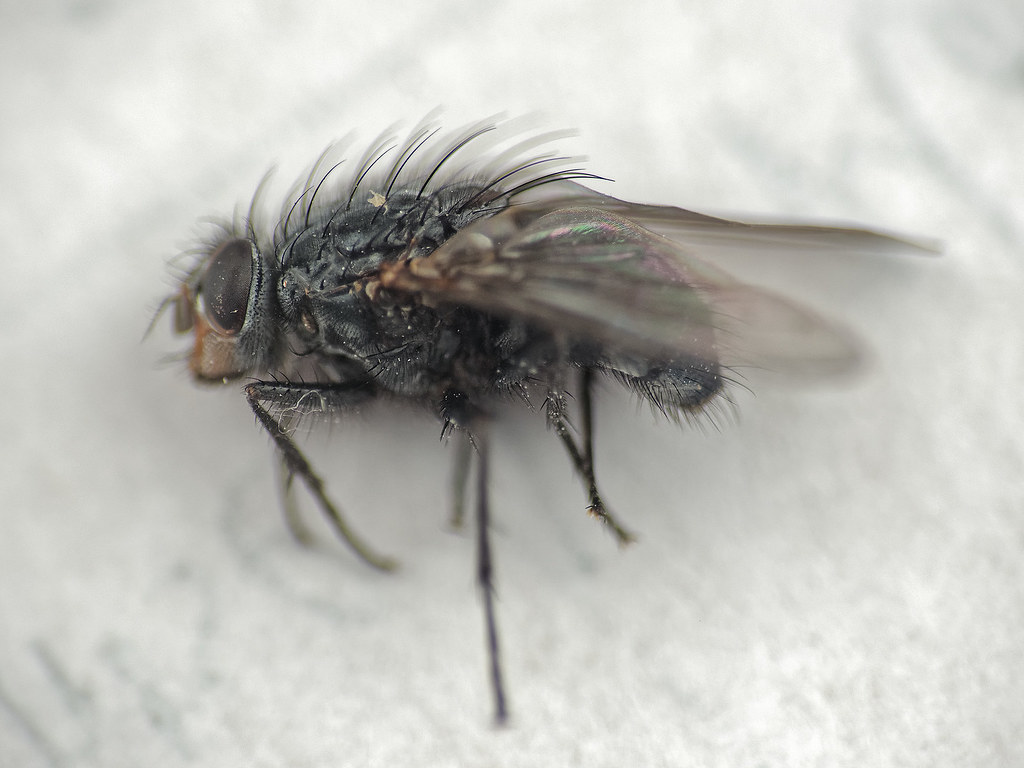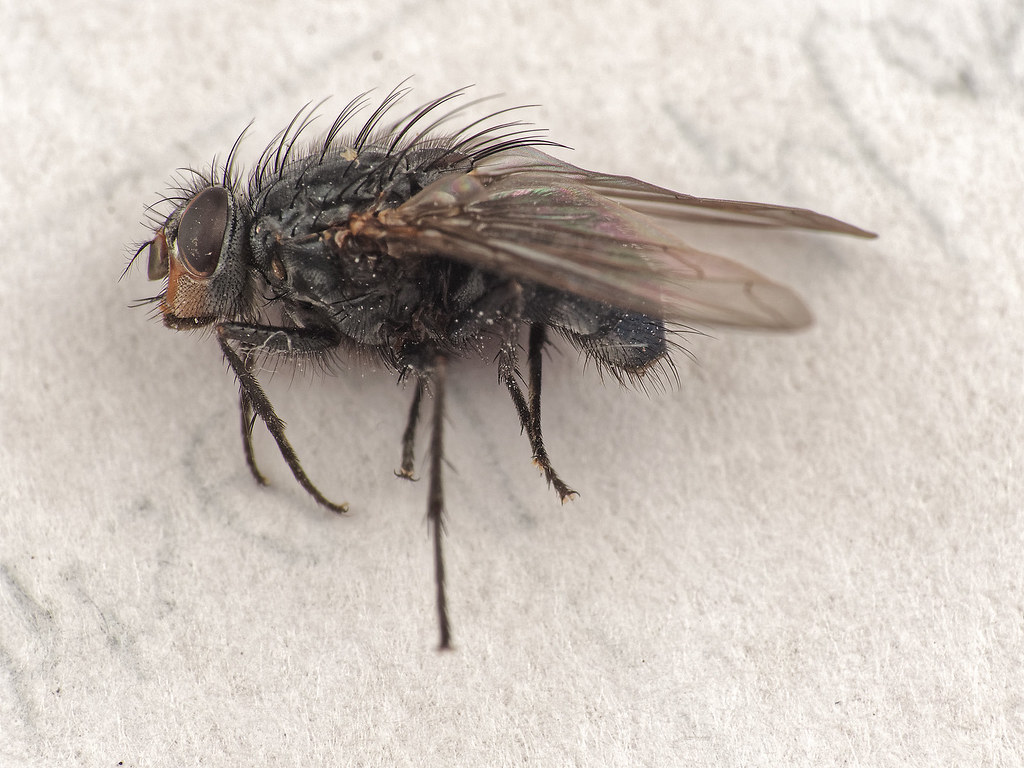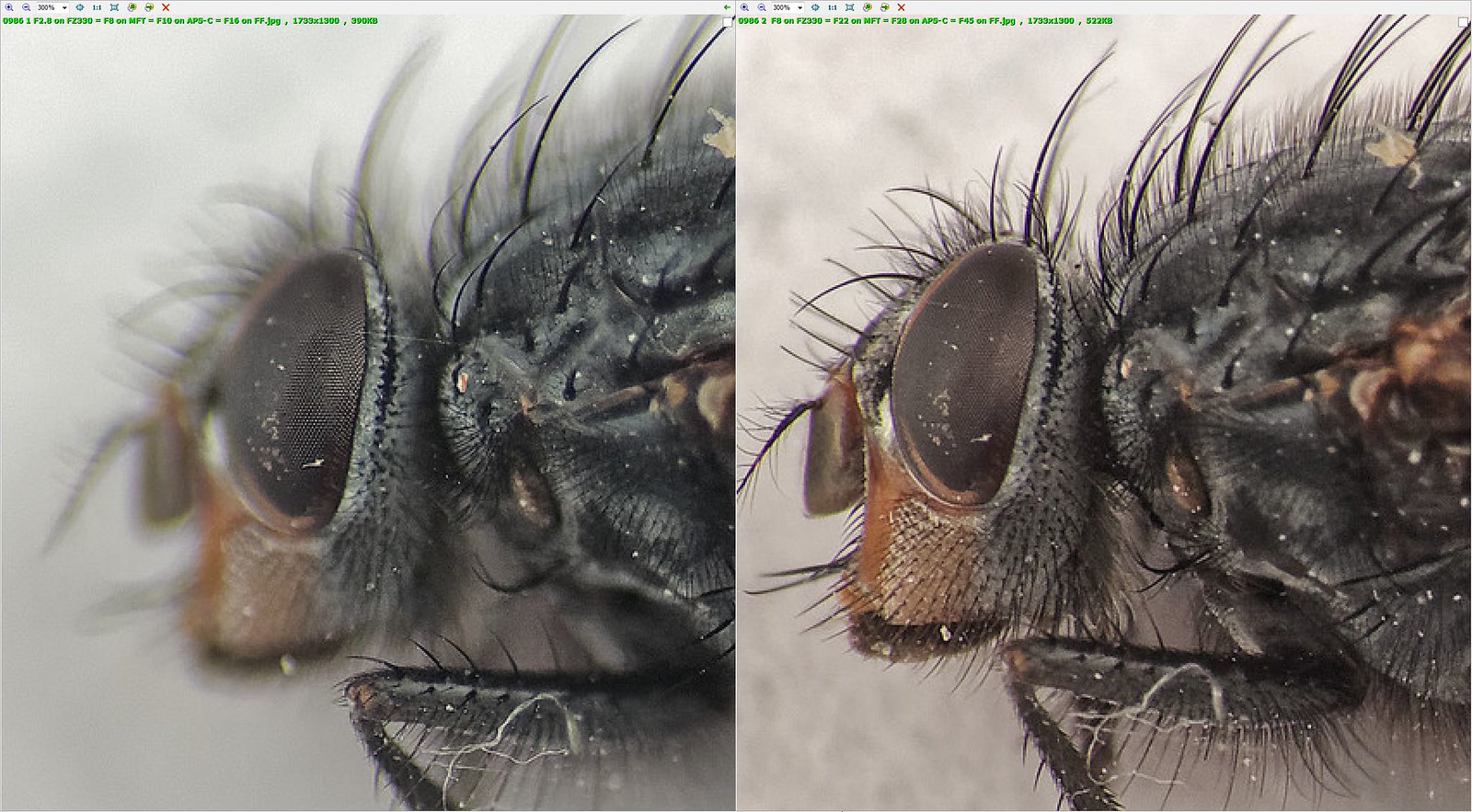GardenersHelper
In Memoriam
- Messages
- 6,344
- Name
- Nick
- Edit My Images
- Yes
As part of the preparations for a video I am making I produced the following example. I thought I would share it here as it might be of interest to those who are new to close-up/macro.
Here are two images of the same dead fly. They don't quite line up because I captured them hand-held. And the colours look a bit different even though the white balance is almost identical. I have no idea why this is. However, I don't think either of these differences is relevant to the subject of this post.
The images were both captured as raw files with my FZ330 bridge camera and KX800 twin flash, using a Raynox 250 close-up lens. The scene width is about 14mm so the magnification is about 1.5:1 from the point of view of an APS-C camera of the type many people here use. Both images have been given identical batch processing in DXO Optics Pro 11 and Silkypix Developer Pro 7 using the parameters I normally use before doing any image-specific post processing. In this case they have both had only the batch processing, and no image-specific processing.
The first image was captured using f/2.8. This gives the same depth of field (DOF) as f/8 on Micro Four Thirds, f/10 on APS-C and f/16 on Full Frame. These four settings also suffer from the same amount of loss of sharpness from diffraction.
The second image was captured using f/8. This gives the same DOF as f/22 on Micro Four Thirds, f/28 on APS-C and f/45 on Full Frame. with the same loss of sharpness from diffraction in all four cases (which is a much greater loss of sharpness than in the first example).
Looking at the eye in the first image, which was captured with the larger aperture, we can see that the half of it that is in focus it is sharper than the same area in the second image. On the other hand, much more of the subject is in focus in the second image, which was captured with a very small aperture. The second image has much greater DOF. But it is not as sharp.
Which is better, a smaller amount in sharpest focus, or a larger amount in less sharp focus? I think that is a matter of personal taste and preference. (btw, with stacking you can have your cake and eat it, with lots in focus and best sharpness for all that is in focus.)
(btw, with stacking you can have your cake and eat it, with lots in focus and best sharpness for all that is in focus.)

0986 1 F2.8 on FZ330 = F8 on MFT = F10 on APS-C = F16 on FF by gardenersassistant, on Flickr

0986 2 F8 on FZ330 = F22 on MFT= F28 on APS-C = F45 on FF by gardenersassistant, on Flickr
Here are two images of the same dead fly. They don't quite line up because I captured them hand-held. And the colours look a bit different even though the white balance is almost identical. I have no idea why this is. However, I don't think either of these differences is relevant to the subject of this post.
The images were both captured as raw files with my FZ330 bridge camera and KX800 twin flash, using a Raynox 250 close-up lens. The scene width is about 14mm so the magnification is about 1.5:1 from the point of view of an APS-C camera of the type many people here use. Both images have been given identical batch processing in DXO Optics Pro 11 and Silkypix Developer Pro 7 using the parameters I normally use before doing any image-specific post processing. In this case they have both had only the batch processing, and no image-specific processing.
The first image was captured using f/2.8. This gives the same depth of field (DOF) as f/8 on Micro Four Thirds, f/10 on APS-C and f/16 on Full Frame. These four settings also suffer from the same amount of loss of sharpness from diffraction.
The second image was captured using f/8. This gives the same DOF as f/22 on Micro Four Thirds, f/28 on APS-C and f/45 on Full Frame. with the same loss of sharpness from diffraction in all four cases (which is a much greater loss of sharpness than in the first example).
Looking at the eye in the first image, which was captured with the larger aperture, we can see that the half of it that is in focus it is sharper than the same area in the second image. On the other hand, much more of the subject is in focus in the second image, which was captured with a very small aperture. The second image has much greater DOF. But it is not as sharp.
Which is better, a smaller amount in sharpest focus, or a larger amount in less sharp focus? I think that is a matter of personal taste and preference.

0986 1 F2.8 on FZ330 = F8 on MFT = F10 on APS-C = F16 on FF by gardenersassistant, on Flickr

0986 2 F8 on FZ330 = F22 on MFT= F28 on APS-C = F45 on FF by gardenersassistant, on Flickr
Last edited:


